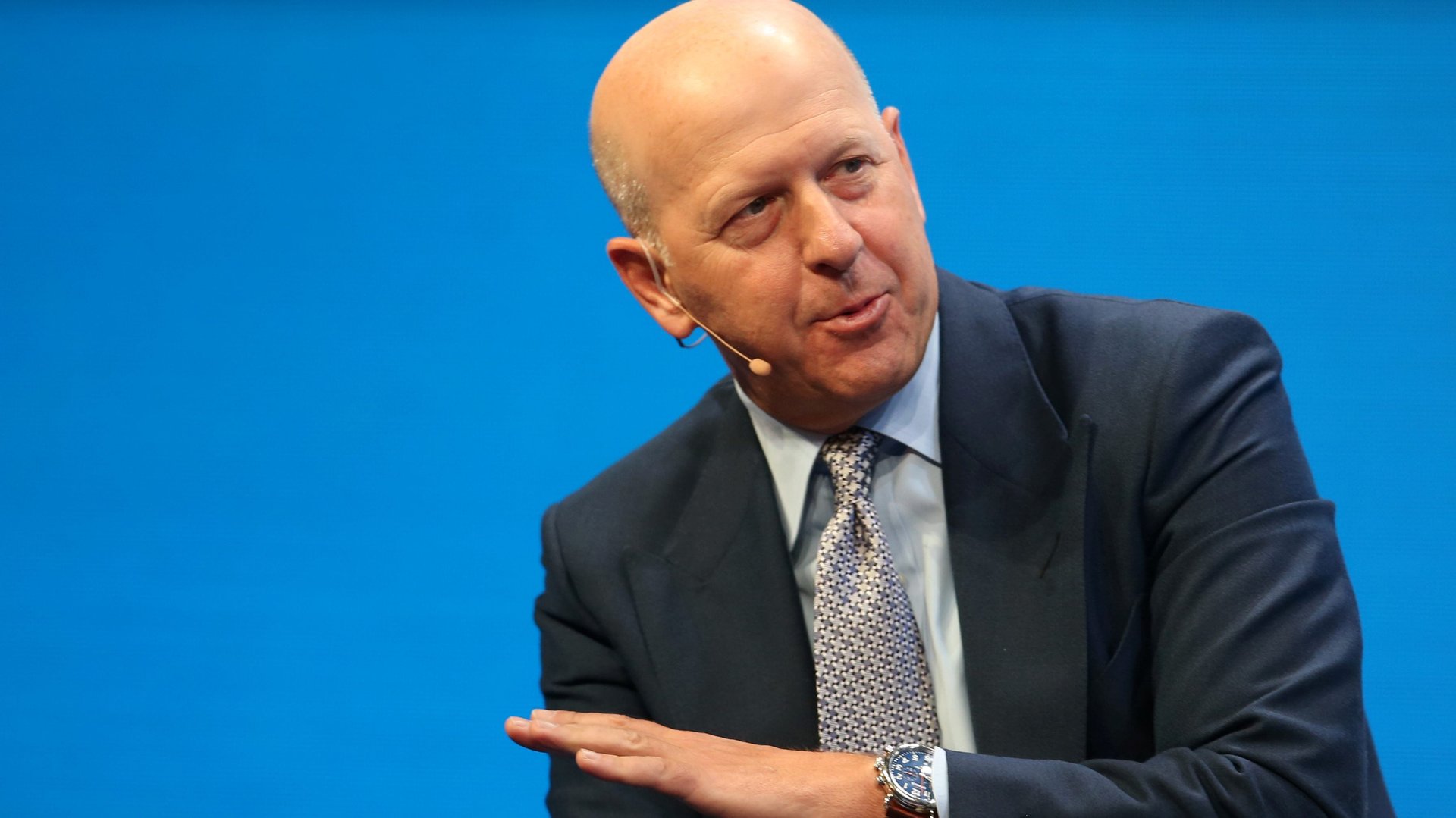The contest to succeed Goldman Sachs CEO Lloyd Blankfein is over
Just days after the Wall Street Journal reported that Goldman Sachs CEO Lloyd Blankfein is preparing to step down by the end of the year, one of the two main candidates to succeed him is out.


Just days after the Wall Street Journal reported that Goldman Sachs CEO Lloyd Blankfein is preparing to step down by the end of the year, one of the two main candidates to succeed him is out.
Harvey Schwartz, the bank announced today, will retire in April after 20 years with the firm. That leaves David Solomon as Goldman’s lone president and chief operating officer; the two men had shared the roles since January 2017.
Investors remain unfazed by the shuffle. After the report of Blankfein’s impending departure began circulating on Friday, the shares registered a brief dip and then quickly recovered. Today, Goldman’s share price is up 0.7% as of this writing. The shrug by the markets suggest the firm has successfully communicated a commitment to an orderly transition.
Solomon’s emergence as the heir apparent came fast compared with contests for other high-profile CEO roles. The succession of Jack Welch, the former CEO of General Electric, took six years, turning into a closely-watched, three-man horserace that finally ended when Jeffrey Immelt won the role in 2000. (The recent hunt for Immelt’s replacement was far less dramatic, if all the more crucial to the company’s future.) Then there’s JPMorgan Chase, where a stream of executives have left the bank either on the understanding that they are not leading candidates to replace CEO Jamie Dimon, or perhaps in a break in their patience as they wait for the long-serving Dimon to announce a retirement date. Dimon has promised, however, that a company insider will succeed him.
An internal pick often indicates a desire by the board for continuity. But Goldman’s next-in-line might also mark new priorities for Goldman. In the aftermath of the financial crisis, the famously high-risk, high-return trading house is now redirecting resources into consumer banking and low-fee index funds.
Solomon joined Goldman in 1999 as an outside partner, focusing on building out the company’s high-yield debt business. He later took over the bank’s investment banking division, where profits doubled and revenue rose 70% during his tenure. Schwartz, meanwhile, had followed in Blankfein’s footsteps, working his way through the company as a trader. By 2008, he was running the trading division. In 2009, Schwartz’ department made more than $33 billion for the bank. But today Schwartz found out, on a very personal level, what Wall Street observers have been saying for years: trading doesn’t pay like it used to.